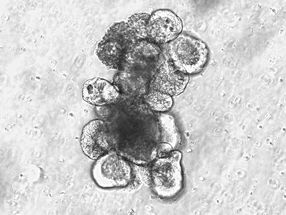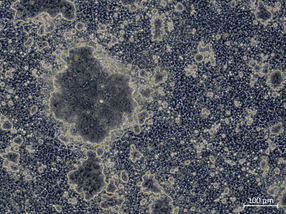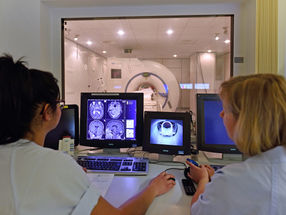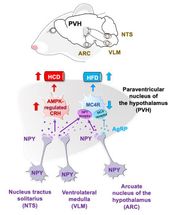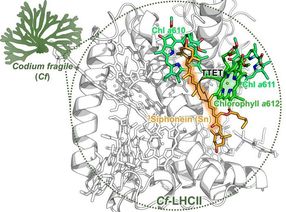Melina Schuh honored with Science Breakthrough 2025
“It has always been my dream to make the entire ovulation process visible”
Advertisement
The director at the Max Planck Institute (MPI) for Multidisciplinary Sciences and her team were the first to visualize the entire ovulation process in mouse follicles in real-time. For this decisive breakthrough in her field, she has been awarded the 2025 Science Breakthrough in the Life Sciences category, as announced by the Falling Walls Foundation. The jury selected her as the winner from 240 nominations.

Prof. Dr. Melina Schuh
© Irene Böttcher-Gajewski / Max Planck Institute for Multidisciplinary Sciences
At the November 9 award ceremony, which is part of the Falling Walls Science Summit, Schuh will present her research to a broad audience from various scientific disciplines as well as from business, politics, and society, and discuss it with them. “This award is a great honor for me and encourages me to continue asking bold questions and finding new ways to answer them,” the Max Planck director says.
Watching ovulation
Schuh and her team are studying how fertile eggs develop. An important step in this process is ovulation. Around 400 times in a woman’s life, a mature egg is released into the fallopian tube, ready to fuse with a sperm cell. A small, fluid-filled protrusion in the ovary, named the follicle, plays a main role in this process. This is where the egg matures. “Until now, little research has been done on how ovulation happens,” explains Schuh.
The ovary lies deep inside the body and is difficult to access for experimental purposes. Ovulation also occurs within a very narrow time window. Lastly, it is impossible to predict which of the two ovaries will release the next follicle.
Schuh and her team at the MPI for Multidisciplinary Sciences in Göttingen (Germany) have recently succeeded in filming the entire ovulation process live in isolated mouse ovarian follicles with high spatial and temporal resolution. A newly developed live cell microscopy method made this possible. “Thanks to our new technique, we learned that ovulation happens in three phases,” reports the cell biologist.
Ovulation in three phases
The first phase, follicle expansion, is driven by the release of hyaluronic acid. During this phase, the size and shape of the follicles change due to the influx of fluid. During the second phase, called follicle contraction, smooth muscle cells in the outer follicle layer cause the follicle to contract. In the third phase, the follicle’s surface bulges and eventually opens, releasing the follicular fluid, the protective accompanying cells – known as cumulus cells – and finally the egg cell.
After ovulation, the follicle closes again and forms the corpus luteum, which produces the hormone progesterone. Progesterone prepares the uterus for the implantation of an embryo. If the egg is not fertilized or the fertilized egg does not implant, the corpus luteum regresses after 14 days. A new menstrual cycle begins.
The results show that ovulation is a remarkably robust process. Although an external stimulus is needed to trigger it, the subsequent steps occur independently of the rest of the ovary because all the necessary information is contained within the follicle itself. With the new method, Schuh’s team and other researchers can now study the mechanisms in even greater detail – with the prospect of gaining new insights for fertility research in humans.
“It has always been my dream to make the entire ovulation process visible,” Schuh says. “I am delighted that we have been able to realize this dream together – thanks to Tabea Lilian Marx, Christopher Thomas, and our entire team.
Other news from the department science
Most read news
More news from our other portals
See the theme worlds for related content
Topic World Cell Analysis
Cell analyse advanced method allows us to explore and understand cells in their many facets. From single cell analysis to flow cytometry and imaging technology, cell analysis provides us with valuable insights into the structure, function and interaction of cells. Whether in medicine, biological research or pharmacology, cell analysis is revolutionizing our understanding of disease, development and treatment options.

Topic World Cell Analysis
Cell analyse advanced method allows us to explore and understand cells in their many facets. From single cell analysis to flow cytometry and imaging technology, cell analysis provides us with valuable insights into the structure, function and interaction of cells. Whether in medicine, biological research or pharmacology, cell analysis is revolutionizing our understanding of disease, development and treatment options.











